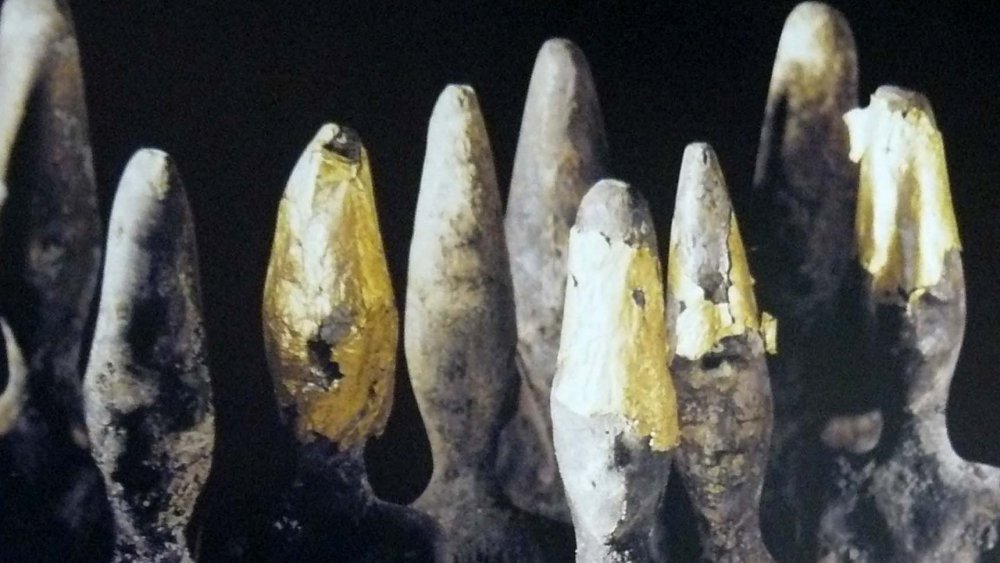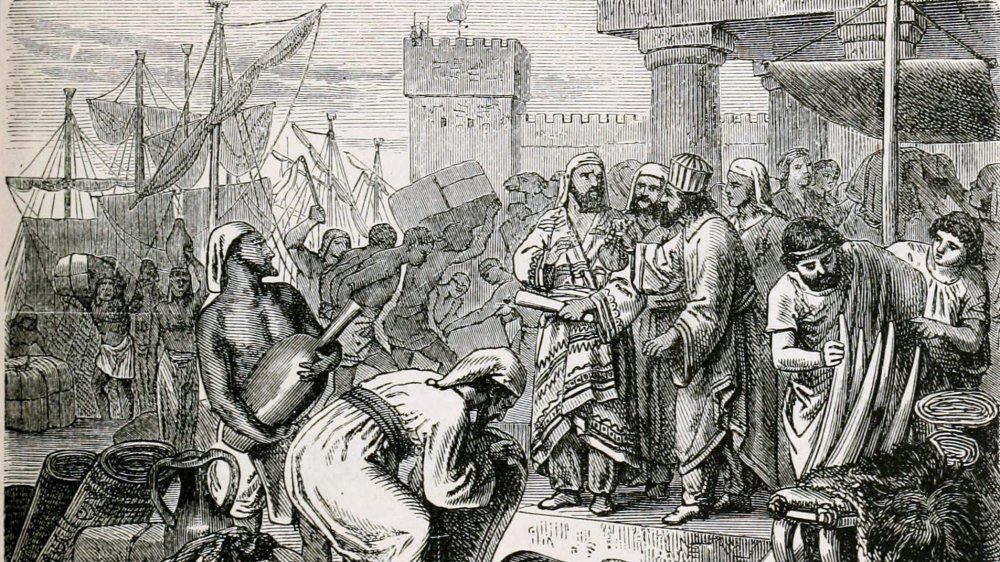The Strange Story Behind These Phoenician Figurines
The Phoenicians stand out amongst other ancient civilizations because they weren't necessarily a singular, unified country. Per Met Museum, they were a loose confederacy of rival city-states deriving from a robust maritime economy. First emerging as urban centers about 1500 BCE, cities Tyre, Sidon, Byblos, and Arwad rimmed the Mediterranean Ocean and traded across waters between modern-day Israel, out to Sicily, Malta, southern Spain and northern Africa, reaching their peak around the mid-300s BCE.
Much of our knowledge about the Phoenicians is secondhand, found in the Hebrew Bible, Assyrian records, and the writings of Greco-Roman authors. We don't even know the name they used to refer to themselves (but it's suspected to be Canaanite). Regardless, the Phoenicians were prolific craftsmen, and were especially famed for their purple dye. They rose to prominence as the Egyptian empire fell, were influenced culturally by every neighboring nation, and in turn influenced numerous others. The Phoenicians are even responsible for the progenitor version of our modern alphabet.
A recent discovery within the vaults of the National Maritime Museum in Haifa, Israel, simultaneously sheds light on the Phoenicians and engenders further questions. As the Jerusalem Post describes, what began as a foray into a rat-filled storage room in the museum led to the discovery of boxes that hadn't been opened since the 1970s. They were full of newspaper and plastic bags that practically disintegrated at the touch, and wrapped within them: over 300 ancient Phoenician figurines.
A real-life Indiana Jones story
The figurines had apparently never been examined or cataloged. Evidence seems to suggest that they were offerings cast into the Mediterranean to appease the gods, fished out of shipwrecks off the coast of Shavei Zion in northern Israel. Many of the figurines seem related to fertility — protruding stomachs, children on shoulders — and bear markings related to the Phoenician goddess Tanit, implying that they may have been used in place of child sacrifice. Other figurines suggest requests to heal injuries, such as a leg made of clay, cast into the water in a bid for healing. All in all, the figurines suggest religious significance, or even an entire cult. In fact, it seems that the figures might have been accumulating at one specific water-based holy site, or temple, over the course of 400 years, from the 7th to 3rd Centuries BCE.
The figurines become even more mysterious when you consider how they were found. Apparently a real-life Indiana Jones (or Lara Croft) named Rob Shusmos discovered the objects. Shusmos wasn't an archaeologist, but an antiquities robber, fisherman, and diver, who sought to make a profit from the figurines. Although records are sketchy, it seems that he tried to sell their location to the museum, and instead, the museum persuaded Shusmos to reveal where they were. With the help of some volunteers from the Underwater Exploration Society of Israel, the best pieces were sent to the museum, where they remained untouched and forgotten until 2020.

